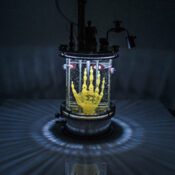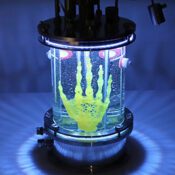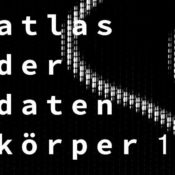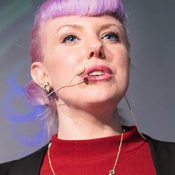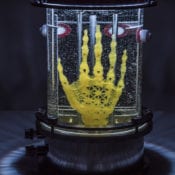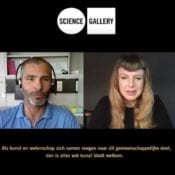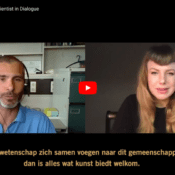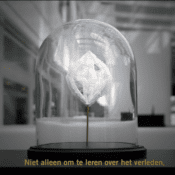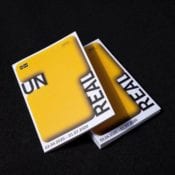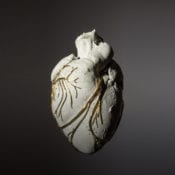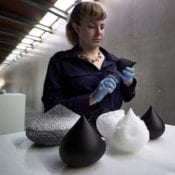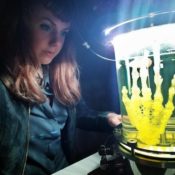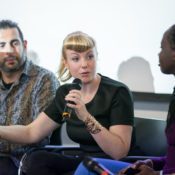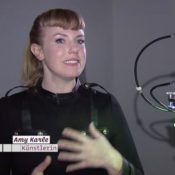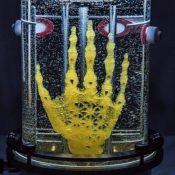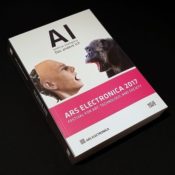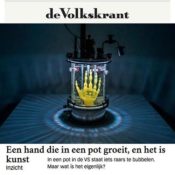PUBLICATIONS & PRESS
Das Künstlerbuch als multimediale Enzyklopädie: Visuelle Schnittstellen in Buchprojekten aus Kunst und Wissenschaft
Marlene Barts Buch untersucht die Verbindungen zwischen Künstlerbüchern und Enzyklopädien, wobei sie die Naturgeschichte als gemeinsamen Bezugspunkt wählt. Amy Karles innovative Arbeiten werden als herausragendes Beispiel für die Verschmelzung von Technologie, Kunst und Naturgeschichte hervorgehoben. Karle integriert digitale, biologische und physische Systeme, um die Grenzen der Wissensvermittlung zu erweitern. Das Buch betont, wie ihre transdisziplinäre Herangehensweise an das Sammeln und Organisieren von Daten traditionelle Ordnungssysteme herausfordert und neue Möglichkeiten für die Entwicklung virtueller Räume und das Wissen im digitalen Zeitalter aufzeigt.
Wikipedia | BioArt
“BioArt is an art practice where artists work with biology, live tissues, bacteria, living organisms, and life processes. Using scientific processes and practices such as biology and life science practices, microscopy, and biotechnology (including technologies such as genetic engineering, tissue culture, and cloning) the artworks are produced in laboratories, galleries, or artists’ studios. The scope of BioArt is a range considered by some artists to be strictly limited to “living forms”, while other artists include art that uses the imagery of contemporary medicine and biological research, or require that it address a controversy or blind spot posed by the very…
Atlas der Datenkörper 1: Körperbilder in Kunst, Design und Wissenschaft im Zeitalter digitaler Medien.
“fundamentale Überlegungen sind der Ausgangspunkt vieler Arbeiten von Amy Karle. Den technischen Fortschritt in der Biomedizin befragt Karle nach seinen existentiellen Auswirkungen. Ausgehend von einer Konversation mit der Künstlerin verfassten Marlene Bart und Alex Leo Freier einen gemeinsamen Essay, welcher die vielschichtigen Ebenen von Karles Œuvre, das sich in der Bioart verorten lässt, bespricht und dieses als Teil einer Geschichte der Imagination liest.”
Wikipedia | Amy Karle
“Amy Karle (born 1980) is an American artist, bioartist and futurist. She creates work that looks forward to a future where technology can support and enhance the human condition. She was named in BBC’s 100 women, as one of the 100 inspiring and influential women from around the world for 2019. Her work questions what it means to be human, with an emphasis on exploring the relationship between technology and humanity; particularly how technology and biotechnology impacts health, humanity, evolution and the future. She combines science and technology with art and is known for using live tissue in her works.…
Regenerating the human body with art: Amy Karle’s bio-artistic proposal
“Amy Karle is an American bioartist who has ventured into 3D sculpture, performance and even fashion with designs made in the likeness of veins, arteries and internal organs of the human being.”
Artist and Scientist in Dialogue
What does it mean to be alive at this time of evolution and technology merging? And how can art and science merge into a common goal? Artist Amy Karle and scientist Roberto Narcisi explain.
DIALING IN: AMY KARLE AND ROBERTO NARCISI (UN)REAL: Artist and Scientist in Dialogue (Video)
What does it mean to be alive at this time of evolution and technology merging? And how can art and science merge into a common goal? Artist Amy Karle and scientist Roberto Narcisi explain.
An (UN)REAL Introduction (Video)
Introduction to the (UN)REAL exhibition at Science Gallery Rotterdam exhibiting Amy Karle’s artwork, Morphologies of Resurrection, 2020. (translated)
(UN)REAL exhibition Catalog (book)
What is real, and how are you sure it is so? Can you be confident in your perceptions when so many experiences are digital or influenced by the changing chemistry and architecture of your brain? (UN)REAL, the inaugural exhibition of Science Gallery Rotterdam at Erasmus MC, presents art projects that respond to this fertile terrain between the actual and the perceived. Includes Amy Karles artwork… These works can serve as bridges of understanding and platforms for debate, but perhaps even more important, they are welcome signs, announcing a new meeting place for research, society, art, and healthcare.
Future Humanity Our Shared Planet
With “Future Humanity – Our Shared Planet” Hyundai Motor Group, Central Academy of Fine Arts Beijing and Ars Electronica present their first joint exhibition project. The focus is on the social and cultural dimension of technological progress. It deals with the future relations between humans and machines, the interactions between culture and technology as well as the tension between tradition and spirituality and the ever-increasing mechanization and rationalization of our world. (translated)
3Dnatives | 3D printing in art: an evolution of the concept
Karle uses what she considers “exponential technologies,” where she includes additive manufacturing technologies “because it has the potential to create more organically, more like the intelligence of how nature is formed and grows.” For this artist the use of new technologies allows her to get much closer to the forms of nature.
Amy Karle on Ö1 Radiokolleg – Nature oblivion
“The step that we’re at in humanity right now is humans and technology merging… I’m looking at the unification of infotech and biotech and how we can leverage that to be more human” – Amy Karle (broadcast in German)
Ars Electronica 2017: Drone Dawn
Technology, for Karle, is a chance to overcome impairments, to augment the body… also she states ‘I am a great advocate of medical freedom.’ Karle pleads not for eugenics or compulsive augmentation, but for the self-determination of every human being… What worries Karle is a possible class contrast between those who will afford expensive implants and prostheses and the poor. The checks and balances for this, as well as for genetics, are simply not yet mature. It is precisely the changes made by genetic engineering that can not be reversed, fears Karle. (translated)
Homo Digitalis bei der Ars Electronica
(see Karle’s work at 4:00) We are constantly connected to the digital world… we can talk to our digital assistants… but we are just getting used to the possibilities of communicating with machines. We explore these themes and the current state of technology with the artists and scientists presenting at “ Artificial Intelligence: the Other I” exhibition at Ars Electronica in Linz… “Merging with technology is not all positive nor all negative, it’s a force, it’s a currency, and it depends on how we use it, towards what ends” Karle says (translated)
Ars Electronica: From growth and a rhythmic classroom
Amy Karle works in a large-scale co-operation with science to make art… we are disturbed and fascinated as we are inspired to think about our nature and our inner being. (translated)
AI Artificial Intelligence Das andere Ich
by Gerfried Stocker, Christine Schopf, & Hannes Leopoldseder Leveraging the intelligence of human stem cells, Amy Karle created “Regenerative Reliquary”… “Regenerative Reliquary” made artistic, scientific and technological advances as it required and inspired new innovations for its creation, as well as influencing a new way of thinking. Amy Karle’s bioart work expands opportunities for art and design, biomedical applications, healing and enhancing our bodies, and opens minds to create things that it was never possible to create before.
A hand that grows in a pot, and it’s art
Appearances can be deceptive: the work is a scientific piece yet the colors are so perfectly balanced, the lighting is surreal, drawing in the viewer in a way we would never see in a laboratory. An art object is what we see here. Bio-art, as it is called: by bio-artist Amy Karle, who previously designed, among other things, dresses based on the cardiovascular system. (translated)

